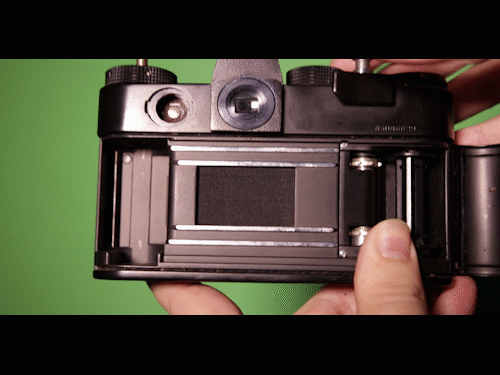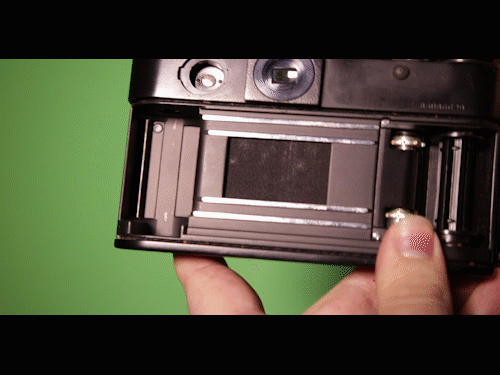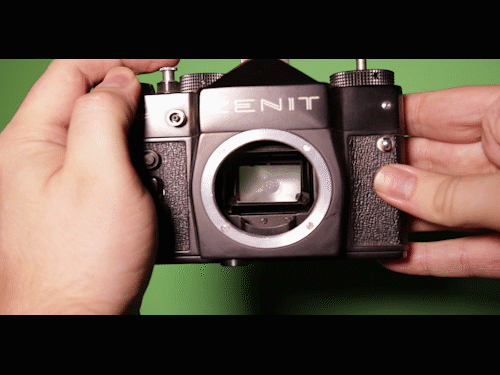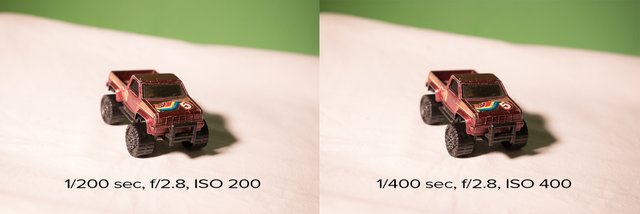Most of the cameras that give you freedom to choose your settings have Program, Aperture Priority, Shutter Priority, and Manual Mode. In Manual Mode camera lets you choose all settings important for the exposure of your photo (how much light will hit your sensor or film).
What will determine your exposure?
Exposure triangle
The amount of light that will hit your sensor is regulated by aperture, shutter speed, and ISO
Aperture represents a hole within a lens that lets light travel to your sensor. You can shrink or enlarge the size of the aperture to allow more or less light to reach your camera sensor.

Aperture on your camera will be shown as an F-number or F-stop (F/1.8, F/4)
The smaller the F-Stop bigger the hole on the lens (it is a bit weird because f/2 is more light then f/11 but once you get it it is normal). When you go from 2 to 2.8 you double the light that is going to the sensor. (you will need to remember the scale for doubling the light, shutter speed and ISO is easier :) )

Basic scale for Aperture
Shutter speed represents the amount of time camera shutter is open and that means for how long will light hit your sensor. Camera shutter is just a curtain that stays closed until you press the shutter (button that you press to make a photo) to take a photo. When you press the shutter curtain opens, and stays open for amount of time specified by shutter speed and then closes and blocks the light to the sensor.


Shutter speed is measured in seconds. Most of the time you will use a fraction of the second. When you go under a second it will show fractions like 1/2 (half of the second) and most modern cameras go to 1/4000 of a second or 1/8000 of a second. To double the amount of light that is hitting the sensor you double the time. If your shutter speed is at 1 second and you need double the light you will go to 2 seconds. If it is 1/400 you will go to 1/200.

Basic scale for Shutter speed
ISO measures the sensitivity of light. In film cameras was the indication of how sensitive a film was to light. More sensitivity of film, less light you need. On film, to change ISO you had to change the film. In digital cameras film was replaced with image sensors.

Lowest value (less sensitive) on most digital cameras is 50 or 100 ISO. Highest ISO on digital cameras is moving with development of new sensors. Doubling the number of ISO will double the light sensitivity of a sensor.

basic scale of ISO
The amount of light is measured in Stops of light. One stop of light means double the amount of light.
So if you change any of the elements in the exposure triangle for one stop more and another for one stop of light less you will get the same photo.
If your settings are shutter speed of 1/200, aperture 2.8, and ISO of 200, and then change shutter speed to 1/400 (curtain closes faster lets less light in) and change ISO to 400 (more sensitivity to light) you will get the same exposure.

While writing i decided to make this post in two parts, it would be to long if i would put all the example photos in just one part. In second part i will try to explain why you should use manual mode and how you should pick your settings in given situations. Also advantages and disadvantages of all 3 elements of exposure triangle.
It all made sense to me and I thought it was a great explanation of shutter speed, aperture, and ISO. Nice work on the GIFs :) Excellent post!
Downvoting a post can decrease pending rewards and make it less visible. Common reasons:
Submit
yes, but you already know all of that :D
Thanks
Downvoting a post can decrease pending rewards and make it less visible. Common reasons:
Submit
Haha! True... But I still thought it would make a lot of sense to someone new to photography.
Downvoting a post can decrease pending rewards and make it less visible. Common reasons:
Submit
This post was shared in the Curation Collective Discord community for curators, and upvoted and resteemed by the @c-squared community account after manual review.
Downvoting a post can decrease pending rewards and make it less visible. Common reasons:
Submit
This is such a great summary! It took me ages to learn that from different videos! I'm sure your post will help many beginners! Thank you for sharing!
Downvoting a post can decrease pending rewards and make it less visible. Common reasons:
Submit
it is basic stuff, but i know a lot of people are scared of M, but it is not that hard
Downvoting a post can decrease pending rewards and make it less visible. Common reasons:
Submit
Nice explanation and visuals
Downvoting a post can decrease pending rewards and make it less visible. Common reasons:
Submit
thanks
Downvoting a post can decrease pending rewards and make it less visible. Common reasons:
Submit
thanks
Downvoting a post can decrease pending rewards and make it less visible. Common reasons:
Submit
Маштовито и елегантно објашњење, @bil.prag :)
Downvoting a post can decrease pending rewards and make it less visible. Common reasons:
Submit
hvala
Downvoting a post can decrease pending rewards and make it less visible. Common reasons:
Submit
Nice article! That last gif with opened Zenith showing "sensor" card made me chuckle :) I'm waiting for the 2nd part, because it's really basic stuff here.
Downvoting a post can decrease pending rewards and make it less visible. Common reasons:
Submit
thanks. did not want to leave my dslr without a lens (dust and all) and Zenit was an interesting option :)
Downvoting a post can decrease pending rewards and make it less visible. Common reasons:
Submit
This post has been voted on by the steemstem curation team and voting trail.
There is more to SteemSTEM than just writing posts, check here for some more tips on being a community member. You can also join our discord here to get to know the rest of the community!
Downvoting a post can decrease pending rewards and make it less visible. Common reasons:
Submit
thanks
Downvoting a post can decrease pending rewards and make it less visible. Common reasons:
Submit